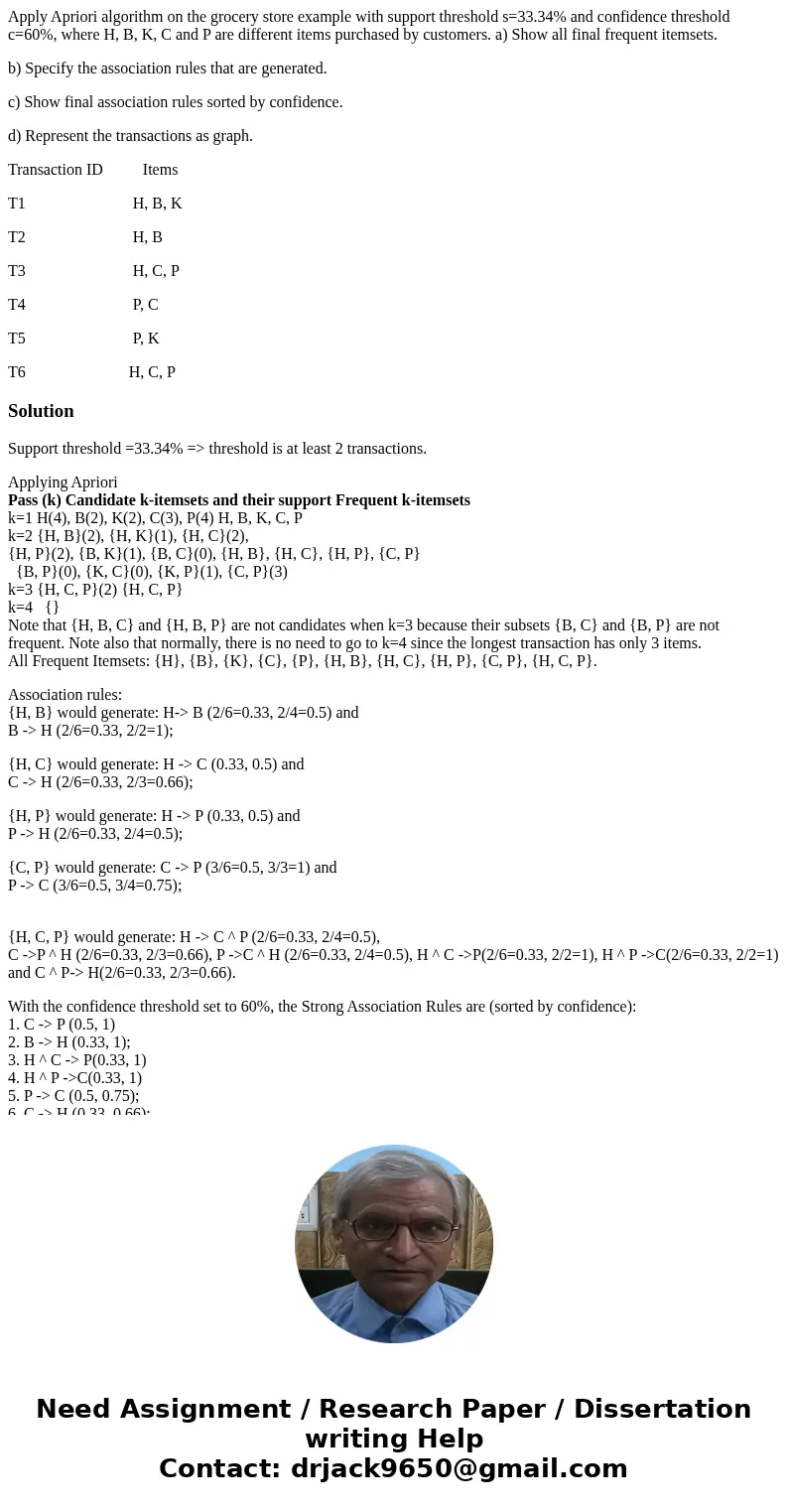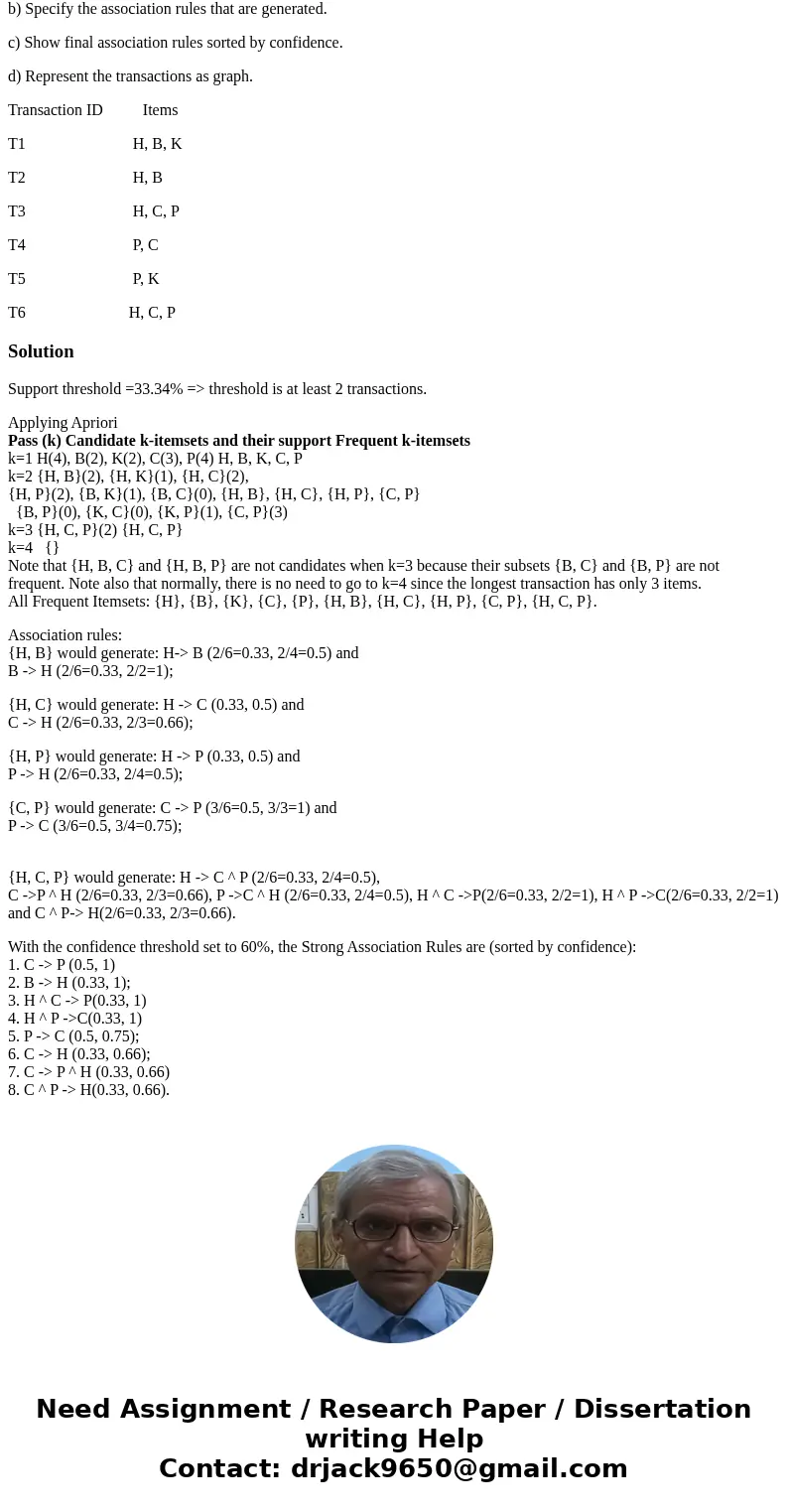Apply Apriori algorithm on the grocery store example with su
Apply Apriori algorithm on the grocery store example with support threshold s=33.34% and confidence threshold c=60%, where H, B, K, C and P are different items purchased by customers. a) Show all final frequent itemsets.
b) Specify the association rules that are generated.
c) Show final association rules sorted by confidence.
d) Represent the transactions as graph.
Transaction ID Items
T1 H, B, K
T2 H, B
T3 H, C, P
T4 P, C
T5 P, K
T6 H, C, P
Solution
Support threshold =33.34% => threshold is at least 2 transactions.
Applying Apriori
Pass (k) Candidate k-itemsets and their support Frequent k-itemsets
k=1 H(4), B(2), K(2), C(3), P(4) H, B, K, C, P
k=2 {H, B}(2), {H, K}(1), {H, C}(2),
{H, P}(2), {B, K}(1), {B, C}(0), {H, B}, {H, C}, {H, P}, {C, P}
{B, P}(0), {K, C}(0), {K, P}(1), {C, P}(3)
k=3 {H, C, P}(2) {H, C, P}
k=4 {}
Note that {H, B, C} and {H, B, P} are not candidates when k=3 because their subsets {B, C} and {B, P} are not frequent. Note also that normally, there is no need to go to k=4 since the longest transaction has only 3 items.
All Frequent Itemsets: {H}, {B}, {K}, {C}, {P}, {H, B}, {H, C}, {H, P}, {C, P}, {H, C, P}.
Association rules:
{H, B} would generate: H-> B (2/6=0.33, 2/4=0.5) and
B -> H (2/6=0.33, 2/2=1);
{H, C} would generate: H -> C (0.33, 0.5) and
C -> H (2/6=0.33, 2/3=0.66);
{H, P} would generate: H -> P (0.33, 0.5) and
P -> H (2/6=0.33, 2/4=0.5);
{C, P} would generate: C -> P (3/6=0.5, 3/3=1) and
P -> C (3/6=0.5, 3/4=0.75);
{H, C, P} would generate: H -> C ^ P (2/6=0.33, 2/4=0.5),
C ->P ^ H (2/6=0.33, 2/3=0.66), P ->C ^ H (2/6=0.33, 2/4=0.5), H ^ C ->P(2/6=0.33, 2/2=1), H ^ P ->C(2/6=0.33, 2/2=1) and C ^ P-> H(2/6=0.33, 2/3=0.66).
With the confidence threshold set to 60%, the Strong Association Rules are (sorted by confidence):
1. C -> P (0.5, 1)
2. B -> H (0.33, 1);
3. H ^ C -> P(0.33, 1)
4. H ^ P ->C(0.33, 1)
5. P -> C (0.5, 0.75);
6. C -> H (0.33, 0.66);
7. C -> P ^ H (0.33, 0.66)
8. C ^ P -> H(0.33, 0.66).


 Homework Sourse
Homework Sourse